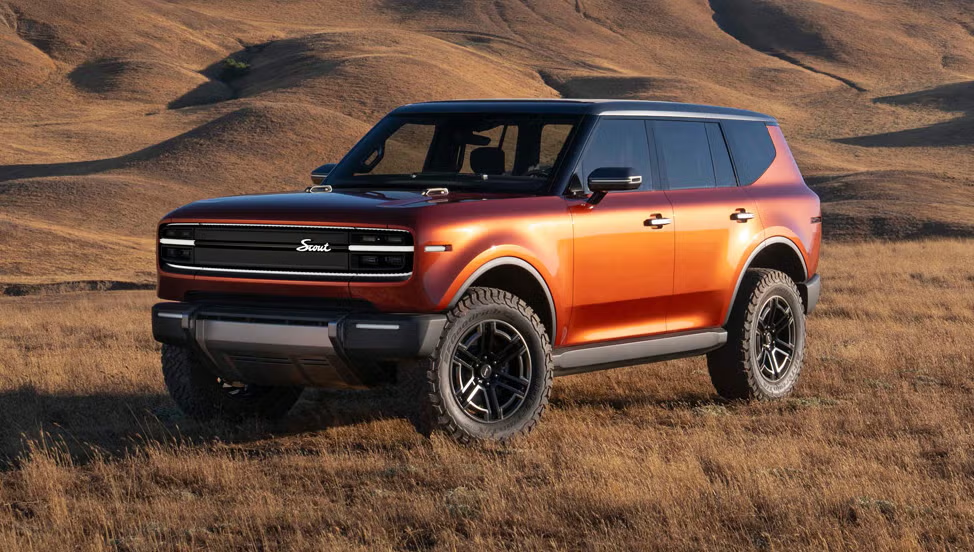In an era where automotive enthusiasts often lament the loss of rugged simplicity in modern vehicles, Volkswagen Group’s decision to resurrect the International Harvester Scout brand represents more than just another corporate revival. It’s a fascinating confluence of automotive history, modern technology, and changing consumer preferences that makes this particular resurrection especially compelling.
The Original Legend
The International Harvester Scout, produced from 1961 to 1980, helped define the modern SUV segment alongside competitors like the Jeep CJ and Ford Bronco. Unlike its contemporaries, the Scout came from agricultural roots – International Harvester was primarily known for producing tractors and farm equipment. This heritage infused the Scout with a unique blend of robustness and utility that set it apart from its peers. The vehicle’s simple, boxy design and proven mechanical components made it both capable and fixable, earning it a devoted following among off-road enthusiasts and farmers alike.
Why Now?
The timing of the Scout revival couldn’t be more perfect. We’re witnessing a remarkable convergence of several automotive trends:
First, there’s the ongoing renaissance of classic SUV nameplates. Ford’s successful relaunch of the Bronco proved that heritage brands still carry tremendous emotional and market value. The Scout, with its cult following and distinctive history, is perfectly positioned to capitalize on this wave of nostalgia.
Second, the electric vehicle revolution has created an opportunity to reinvent iconic vehicles without the constraints of traditional powertrains. By choosing to develop the Scout as an electric vehicle, VW can preserve the original’s rugged character while addressing modern environmental concerns and performance expectations.
Third, the premium off-road vehicle segment is booming. Consumers are increasingly seeking vehicles that combine everyday usability with genuine off-road capability, as evidenced by the success of vehicles like the Rivian R1T and GMC Hummer EV.
The Electric Advantage
The decision to make the new Scout electric is particularly intriguing. Electric powertrains offer several advantages that align perfectly with the Scout’s original mission:
- Instant torque delivery, which is ideal for off-road situations
- The potential for individual wheel control through multiple motors
- A lower center of gravity thanks to battery placement
- Simplified maintenance compared to traditional off-road vehicles
- The ability to serve as a power source for tools and equipment in remote locations
Additionally, the electric platform allows designers to maximize interior space while maintaining compact exterior dimensions, much like the original Scout’s efficient packaging.
Preserving the Heritage
What makes the Scout revival especially interesting is VW’s approach to the project. Rather than simply applying the Scout name to an existing platform, they’re creating a dedicated EV architecture for the brand. This commitment suggests a genuine desire to honor the Scout’s legacy while pushing it into the future.
The company’s decision to establish Scout as a separate brand also shows wisdom – it allows the new vehicles to develop their own identity without being constrained by either VW’s mass-market positioning or its European heritage. This independence could be crucial in maintaining the Scout’s authenticity in the eyes of enthusiasts.
Cultural Impact and Market Potential
The Scout revival taps into a broader cultural moment where authenticity and capability are highly valued. In an automotive landscape increasingly dominated by crossovers that merely look rugged, the promise of a genuinely capable electric off-roader with real heritage has profound appeal.
Moreover, the Scout’s agricultural roots could prove particularly relevant as the automotive industry seeks to electrify rural America. A capable electric vehicle from a brand with historical connections to farming communities might help bridge the cultural gap that sometimes exists between EV adoption and rural users.
Looking Forward
As we await the arrival of the new Scout vehicles, expected to begin production in 2026, the revival represents more than just another entry in the electric vehicle market. It’s an ambitious attempt to bridge multiple gaps: between past and future, between rural and urban users, and between traditional automotive values and modern environmental concerns.
The Scout revival is fascinating because it’s not just about bringing back a beloved nameplate – it’s about reimagining what a rugged, capable vehicle can be in the electric age. If successful, it could help write the next chapter in the evolution of American off-road vehicles, just as the original Scout helped define the SUV segment over 60 years ago.
This convergence of heritage, innovation, and timing makes the Scout revival one of the most intriguing stories in today’s automotive landscape. It’s a bold bet that the values that made the original Scout special – simplicity, capability, and durability – can be successfully translated into the electric age, potentially creating a new template for how classic automotive brands can be meaningfully reinvented for the future.






